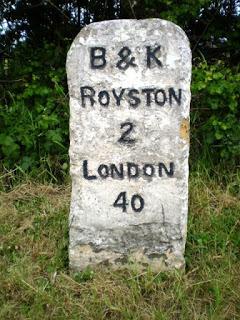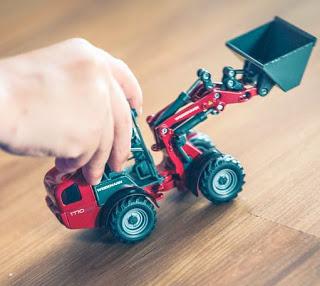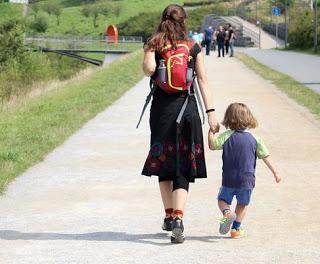One of the most problematic areas of autism is communication. It’s often assumed that kids who don’t reach their speech milestones by ages 4-5 will never communicate; or at the very least that they will never speak.
This is not necessarily the case and as circumstances change, new technologies develop and your children get a better “handle” on their differences, speech can become a very real possibility.
Ending the Milestones
 Unfortunately, some parents have already given up by the time their children are ready to develop language and they never have a chance to reach their potential. This is understandable as parents can only continue with normal milestones for a limited time before they need start on an alternative track in order to provide the best care for their children.
Unfortunately, some parents have already given up by the time their children are ready to develop language and they never have a chance to reach their potential. This is understandable as parents can only continue with normal milestones for a limited time before they need start on an alternative track in order to provide the best care for their children.It's not always obvious that the old milestones need to be revisited in the future.
One of the most important things to remember as an autism parent is that you're no longer following the standard milestones. Stop competing with the other parents and accept that you're proceeding at a different pace ... and potentially, in a different order. Speech may not necessarily come first.
Communication is Key
Imagine what it would be like if you were trying to work in an office where nobody else could understand your speech, writing or gestures. Now imagine that one of your colleagues liked to play loud music, another liked to bump the desk and yet another kept playing with the lights turning them on and off constantly. For good measure, assume that one of your colleagues keeps overdoing her perfume and that another simply can't keep their hands off the things on your desk.It's important to remember that your child on the spectrum isn't just struggling with the difficulty of learning to communicate. They're struggling with their own sensitivities which are usually more easily overwhelmed than their peers.
In the office scenario I described earlier, many people would eventually use some form of physical contact to communicate with their colleagues. Holding the shaking hand or bobbing knee or their table-bumping worker, covering the light switch or pulling the plug on the loud music.
Your child isn't going to be quite that sophisticated and their reaction to being overwhelmed is more likely to be simply covering their eyes and ears, rocking, crying, snatching items back and hitting or biting other children.
While there are many reasons for this kind of behavior in kids, many of them are related to the inability to communicate.
Alternative Communication
 Regardless of what you do, your child is eventually going to learn alternative methods of communication. Whether those methods are positive or negative are up to you.
Regardless of what you do, your child is eventually going to learn alternative methods of communication. Whether those methods are positive or negative are up to you.For example, if you take a child to someone's house and there's nothing for them to play with, they'll eventually do some form of damage. It could be spilling a drink, knocking over an ornament or annoying a pet. Whatever happens is less important than how you react. Many parents react to these incidents by making a hasty exit.
Next time, you may be shopping and your child may knock something over or pull some clothes off the racks ... and again you make a hasty exit.
In no time at all, you find yourself with a walking disaster area. You can't stay anywhere for long because your child will always "trash the place". Others around you will see this as extremely naughty behavior but it's hard to understand because your child is normally so good at home.
What's really happening is that your child has learned to communicate with you. Trashing the place means - "I'm ready to go home now".
If you have non-verbal children, have a think about how they react in certain circumstances. Do they follow patterns? Are there certain behaviours that occur around mealtimes? Do they act differently when you pass a sweet shop? Are there unspoken rules in their behaviour, such as; needing to get a new toy whenever you're out shopping in order to avoid a tantrum?
If so, that's communication. It might be negative communication but it's still something that you can build upon.
Improving Communication
Once it's obvious that your child is communicating with you, it's time to start changing the nature of that communication and moving it to less destructive methods. Some children respond well to signing, while other respond better to pointing at charts. Surprisingly, some children are able to communicate through writing or typing or via technology such as phones and tablets even though they have no speech.You'll need to try a lot of options and a lot of repetition in order to see what works best for your child.
The most important thing to remember is that your child's early communication attempts will center around their "wants". Things that they either want or don't want and your most successful communication will result in immediate rewards.
"Gaming" your way to Communication
 The best ways to get your children to communicate is to engage them one-on-one in things that they enjoy, for example games. Since this is about communicating "wants" rather than "don't wants", the communication should be fairly positive and fun.
The best ways to get your children to communicate is to engage them one-on-one in things that they enjoy, for example games. Since this is about communicating "wants" rather than "don't wants", the communication should be fairly positive and fun.Suppose that you limit your child to three major toys for a particular series of games that you play together regularly; In this example, Truck, Bear and Ball. These three have quite different names so it's going to be fairly easy to distinguish between them. You should spend time playing with ONE of these and be sure to repeat the name over and over.
"Today we will play with the TRUCK". Spend time playing with the truck, perhaps pushing it back and forward towards each other. As you push it, say things like "I will push the TRUCK to you" or "are you ready for me to push the TRUCK" and "can I have the TRUCK now" or "could you push the TRUCK towards me".
It's not necessary for you to use simple language like "PUSH TRUCK" and in fact, using baby-talk will make it harder for your child to distinguish the nouns. You want him to understand that the object is called a TRUCK not a PUSH TRUCK.
If you mention the truck frequently when you push it towards your child (not necessarily every time), you'll establish an understanding. Make sure that the game is fun too and if you child tires of it, stop playing.
After a while, say twenty turns or more, introduce some delays, perhaps looking around without actually introducing anything new, distracting or more interesting to your child. Perhaps pretending not to notice that the truck has returned to you.
See if your child tries to communicate. They'll most likely gesture but see if you can hold out for some noise. Eventually you should start to hear a word that sounds like Truck though you probably shouldn't expect it in first few sessions of play. You may have to do this a few times, with longer delays on your part in order to spark the language.
Avoid Distractions
When you play with your child like this, you'll need to avoid distractions. I'm not just talking about Telephones and Televisions, though these must remain OFF and preferably in another room entirely. You also need to concentrate on the task at hand, which is getting your child to communicate what they want.You want the word TRUCK and ideally, you want the words PUSH and TRUCK. As things progress, you'll need to confuse matters, for example "Who should push the truck" or "Where should I push the truck to". The eventual aim being to get your child to not only say the words but to actually understand what they're saying. For this reason, you need to be careful not to put words into your child's mouth.
It's going to be a great moment when you finally hear the words but don't get carried away and celebrate. Simply accept that the words have been spoken and push the truck speedily towards your child.
You've no doubt heard that children love to receive praise as a reward but in this case, the child isn't seeking a reward. They're seeking a way to use language to get something done in the real world. If you want to encourage the use of more language, then you need to show them that it's very effective.
Expanding Nouns
Don't be tempted to keep playing with just the truck for weeks. Switch between other toys but keep your special three reserved for your special parent/child playtime sessions. If you let your child have those toys at other times, they'll lose their special appeal.Eventually, after having played with all the toys from one "session" to another -- particularly if you've gotten a word or two out of your child, you'll want to introduce the concept of a choice. "What should we play with this time?"
You might have to offer choices for the first few times but the aim is to get the child to use their own words rather than parroting you.
If you let your child simply point to the toy, they'll see no need to use their words. You need to ensure that words are far more effective than pointing.
Going out into the Real World
 The more your child finds words to be more effective than actions, the more they'll use them. You'll have to watch your reactions to their non-verbal activities and make sure that you don't become predictable. In other words, their non-verbal "wants" and "don't wants" need to be met with a degree of "misunderstanding" so that their words will seem more powerful.
The more your child finds words to be more effective than actions, the more they'll use them. You'll have to watch your reactions to their non-verbal activities and make sure that you don't become predictable. In other words, their non-verbal "wants" and "don't wants" need to be met with a degree of "misunderstanding" so that their words will seem more powerful.If your child starts saying BYE and waving to their grandmother, rather than knocking over an object, you need to see this as a step in a positive direction and react accordingly where possible.
Eventually you'll need to teach them that other people have wants and needs too but that's a whole different ball game.
Note: Some of the ideas in this post were inspired by Robert J. Bernstein's book "Uniquely Normal" which I reviewed recently.

